More results...
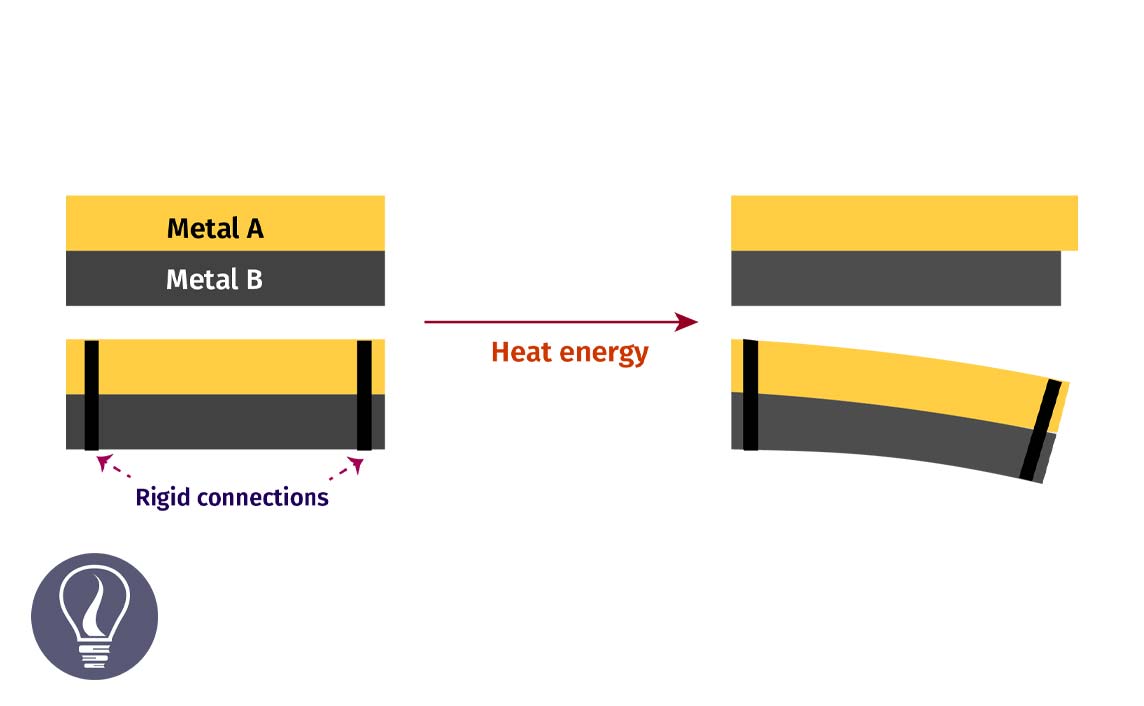

This article mainly discusses the linear expansion of solids. But to properly enter that topic, we have to get a proper idea about what is the thermal expansion of matter and why it happens.
When the matter is supplied heat, if the volume of the matter increases with the temperature, it is called a thermal expansion.
The thermal expansion can be a,
Very matter exists made out of atoms. When heat energy is provided to any kind of matter including solid, liquid, and gaseous matter, the kinetic energy of atoms that are in the material will be increased. As a result of this increment of kinetic energy, the vibration frequency of atoms will be increased. Also moving distance of atoms will be increased. So the distances between atoms will be increased.
Thermal expansion will affect differently to solids, liquids, and gases. Therefore because of thermal expansion in matter,
When heat is supplied to a solid, a solid matter will increase its length, surface area, and volume. So there are three types of solid expansion.
When the heat is supplied to an object like a rod, it shows an increase in length. This is known as the linear expansion of solids. Mathematically, when the temperature is increased by Δθ degrees, of a rod-like object with the length of 'l', if it shows the increase of length by Δl, the increase in length is proportional to the initial length and the temperature difference.

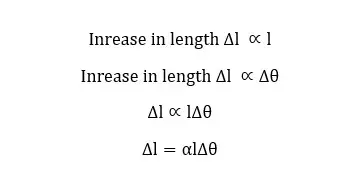
Where,
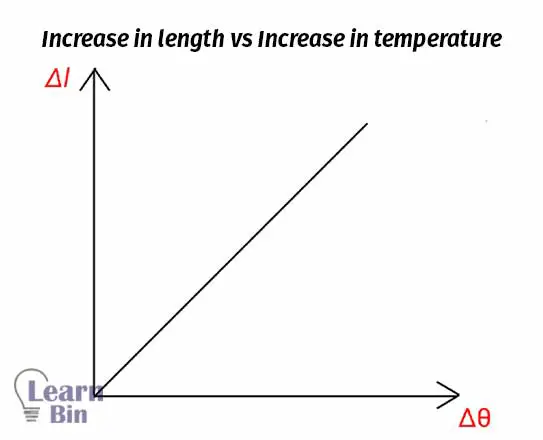
The linear expansion coefficient is the proportional coefficient that expresses the ratio between the increased length and the original length when the temperature is increased by one degree of Kelvin or Celsius. Linear temperature expansion coefficient is a material property.

Consider a rod with the length of l1 at temperature θ1. When this rod is heated up to θ2, the length would be l2. If the linear expansion coefficient of the material is α, the final length of the rod can be expressed in terms of the linear expansion coefficient.
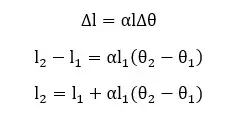

| Material | Linear expansion coefficients (×10-6 0C-1) |
| ABS thermoplastic | 72 - 108 |
| Aluminum | 21 - 24 |
| Brass | 18 - 19 |
| Cellulose nitrate | 80 - 120 |
| Portland cement | 11 |
| Chromium | 6 - 7 |
| Concrete | 13 - 14 |
| Copper | 16 - 16.7 |
| Copper, Beryllium 25 | 17.8 |
| Diamond | 1.1 - 1.3 |
| Glass, hard | 5.9 |
| Glass, Pyrex | 4.0 |
| Gold | 14.2 |
| Ice, 0oC water | 51 |
| Iron, cast | 10.4 - 11 |
| Lead | 29 |
| Glass fiber reinforced Nylon | 23 |
| Polyamide | 110 |
| Polycarbonate | 65 - 70 |
Two metallic strips with the same dimensions but different linear expansion coefficients are joined together. When it is heated, two metals are expanded according to their linear expansion coefficients. The metal with a higher thermal expansion coefficient will show a higher increase in length than the other metal. This will result in a bend in the bimetallic strip.
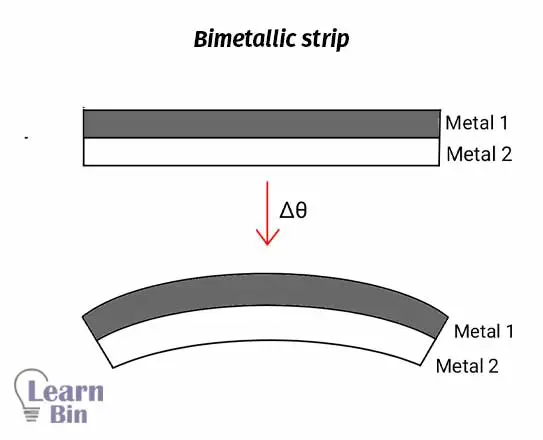
Bimetallic strips are used in some electric circuits to protect the device from high heat. When the temperature increases, the bimetallic strip will bend and the circuit will be disconnected. Thus, the temperature is decreasing and the bimetallic strip will become the original state. Therefore, the circuit is connected again.
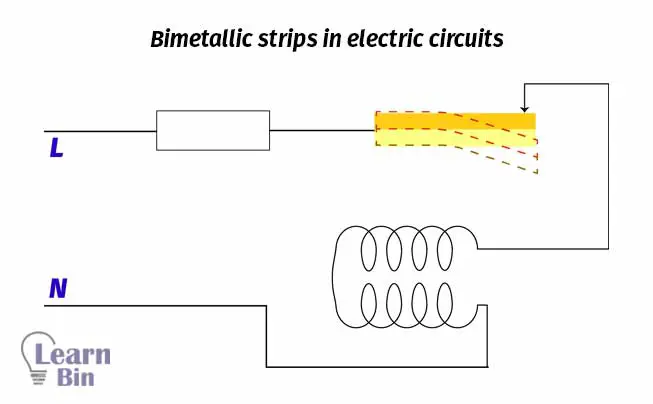
Question 01
When the temperature of a rod is increased by 100 °C, it will show 0.002 of rational increase in length. What is the linear expansion coefficient of the material?
Answer
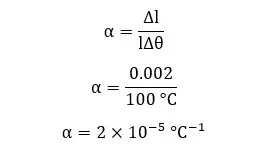

Sciencedirect.com - Thermal expansion
Engineeringtoolbox.com - Linear expansion coefficients
Amesweb.info - Linear thermal expansion coefficient of metals
The cover image was designed using an image by Virtual gamma, licensed under CC BY-SA 3.0, via Wikimedia Commons